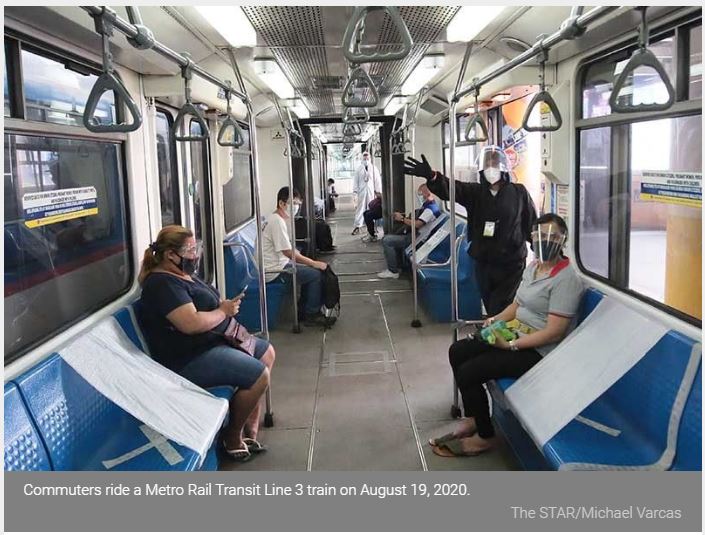Philippines jobless rate eases, but Metro Manila left behind
MANILA, Philippines (UPDATE 2 1:34 p.m., Sept. 3) — The number of jobless Filipinos went down nationwide in July after lockdown measures were eased, but a disproportionate rise in unemployment in the key economic center of Metro Manila disrupted what could have been a broad recovery.
A tenth of people in the labor force did not have a job in July, down from a record-high of 17.7% in April when movement restrictions were enforced, preliminary data from Philippine Statistics Authority (PSA) showed. The current rate translated to 4.6 million people out of jobs for the month.
Similarly, the proportion of workers looking for more work— the underemployment rate— decreased to 17.3% in July from 18.9% in April as on average, employees, most of whom were stuck from home, worked for about three hours longer.
In total, 45.9 million Filipinos were part of the labor force or those people aged 15 years and up actively looking for work, up from just 41 million in April.
“What we are seeing is that, of course, the easing of quarantines helped but there are also other reasons (for the decline),” National Statistician Claire Dennis Mapa said in Filipino during a virtual briefing on Thursday.

Acting Socioeconomic Planning Secretary Karl Kendrick Chua, in a separate briefing, agreed. “To bounce back from this crisis, we will need to open the economy even more. This will depend on everyone working together to adhere to health standards, as the government accelerates the implementation of the recovery program,” he said.
By government estimates, 2.7 million jobs lost to quarantines returned in July after lockdowns were relaxed beginning June.
That said, bysex, one in 10 males and females remained not working during the survey period from July 8 to 31. Male workers looked for more jobs than their female counterparts, with underemployment rate for the former at 19% and the latter, 14.5%.
Among the youth aged 15 to 24 years old, 1.7 million were out of work in July, equivalent to 22.4% jobless rate, down from 31.6% in April.
NCR an outlier
While at the national level the job picture recovered, and so did in most regions, the National Capital Region (NCR) experienced bigger job losses. The unemployment rate edged up to 15.8% in July from 12.3% in April in the economic center, representing around 929,000 people left with no work.
Calabarzon and Central Luzon, which together with NCR accounted for the bulk of employed people, also continued to post double-digit jobless rates at 12.4% and 10.9%, respectively, albeit considerably down from April.

Chua attributed NCR’s poor showing in the report to the lack of public transport. By his estimate, the capital region’s transition to general community quarantine last June should have prompted 58.2% of the area’s workforce to return to work. But without jeepneys, buses and tricycles, only 35.5% did.
“Without a public transport system back sufficiently, many people cannot go back to work,” Chua said.
Despite the better job figures in the national level, Nicholas Antonio Mapa, senior economist at ING Bank in Manila, said with “partial lockdown measures in place, unemployment figures will likely remain elevated well into the next year.”
Chua said the Duterte administration indeed sees unemployment rate worsening between 6-8% this year, before sliding down to 4-5% in 2022. Last year, the rate hit 5%.
Entertainment loses, mining gains
By occupation, the labor market also performed differently in July. On a year-on-year basis, 316,000 jobs were lost in the arts, entertainment and recreation sectors, highlighting the impact shooting cancellations during the pandemic as well as ABS-CBN Corp.’s shutdown.
Accommodation and food services, meanwhile, slashed 719,000 workers with the hotel and tourism market taking a blow from flight prohibitions. About 124,000 jobs were lost in the information and communication sectors and 301,000 in fishery.
On the flip side, mining generated 39,000 more jobs in July than same period a year ago, and so did the farm sector with 1.4 million jobs. The utility sector created 9,000 more jobs on-year, figures showed.
Investors cheered the better job numbers. The Philippine Stock Exchange index closed up 0.6% to 5,772.86 on Thursday, with all sub-indices, save from property, in the green.
Going forward, Chua reiterated that the government is banking on its “Build, Build, Build” infrastructure program to build on job gains. By yearend, the government targets to generate 1.1 million direct and indirect jobs as a result of bigger capital outlays, rising to 1.6 million next year.
“The progress we have seen in the health sector and in the economy is encouraging,” Chua said.
Editor’s Note: Added charts, jobless rate by sex, PSE closing, infrastructure program
Source: https://www.philstar.com/business/2020/09/03/2039582/philippines-jobless-rate-eases-metro-manila-left-behind


 English
English




